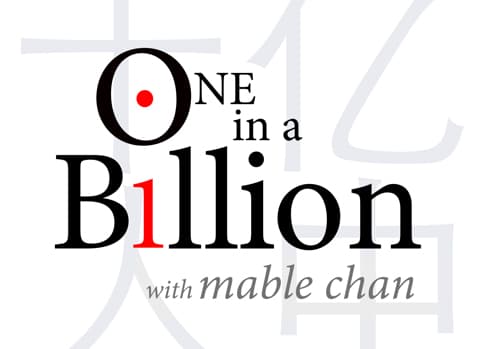Recently, I attended a small group Zoom gathering to speak with Dr. Janil Puthucheary, Singapore’s Senior Minister of State (SMS), Ministry of Transport & Ministry of Communications and Information (MCI).
Representing Japan, I was asked to speak about my activities to support the local community of overseas Singaporeans with my action and research on “How to Get Tested for the Novel Coronavirus (COVID-19) in Tokyo.” I was also able to share on some recent efforts to support a therapeutics company developing a vaccine for COVID-19 with Singapore’s Duke-NUS Medical School through my work on the healthcare investments team at a Japanese private equity fund.
What is it like to be an overseas Singaporean in the 21st century and during the coronavirus outbreak? In this article, I wish to share my personal story.
Homes around the World, but Hearts in Singapore
The Singapore diaspora consists of about 250,000 Singaporeans living overseas, with Australia, Malaysia, and the United Kingdom having the largest communities. According to the Embassy of Singapore in Tokyo, about 3000 Singaporeans are living in Japan.
When the topic of the Singapore diaspora came up in my conversation with Dr. Janil Puthucheary, I could not help but reflect that my life intimately represents this community in many ways. For as long as I can remember, my life has been established upon multicultural hybridity and movement. I am a half-Cantonese, half-Teochew Singaporean woman (with Peranakan ancestry to boot!) who was raised in Shanghai but attended an international high school; my childhood classmates named me the “Nanyang Girl” – too foreign for some, yet too Asian for others. I have spent more years outside of Singapore than in our island state, living across China, the U.S., Europe, South Korea, and now Japan. Interactions with people from clearer heritages around the world have made me keenly aware of my ambiguous roots.
Looking back, perhaps the only constant way to describe me has been through my relationship with the liminal “other.” When asked about my upbringing, I often found myself filtering my experiences to appear more comprehensible. And yet, I never hesitate in answering when people ask me, “Where are you really from?”
The answer will invariably be, “Singapore.”
This learned empathy with representations of “otherness” in the stories of fringe communities that I encounter has been a key theme throughout my life (the exploration of ethnic and social identity is evident in most of my writings and publications). What drew me to these issues was the desire to better understand the distinct languages, cultures, and identities subjected to transnational flows. I now realize that my personal migratory experiences give me a nuanced, but inextricable, perspective on the multiple meanings of diasporic sojourn vis-à-vis my Singaporean origin. I also find myself particularly sensitive to the needs of the disadvantaged or minorities that others may overlook.
As chronicled in my interview with The Straits Times on “Home, truly: The place that nurtured me for abroad,” I believe that Singapore’s multi-cultural society has prepared me to thrive abroad. Hence, I am constantly looking for ways to turn my experiences abroad into something positive for the Singapore society.
This motivation drove me to take action during the 2020 coronavirus outbreak.
Japan’s bureaucracy can be daunting to navigate, especially for non-Japanese speakers. It concerned me that for people who were sick or those who may not have the language skills to navigate the coronavirus testing application process, not having access to critical information would be extremely stressful.
To address this issue, I made dozens of phone calls to Tokyo’s coronavirus-related centres to find out more information and wrote the article, “How to Get Tested for the Novel Coronavirus (COVID-19) in Tokyo.” My goal was to hopefully help others save time when figuring out what to do if they should feel a need to get tested.
To my surprise, the article was shared widely not only amongst the Singaporean community in Japan but also with many of Tokyo’s foreign residents.
As an overseas Singaporean, there is nothing more nostalgic than the feeling of arriving back home, being welcomed by the countless twinkling lights of high-rise buildings as your plane coasts in, hearing the familiar Singlish accent everywhere, feeling the familiar intrepid blast of humid-hot air pouring over you as you step out past the sliding doors at the air-conditioned airport terminal, indulging in all of the local favourites, whether it is an Otak-Otak, Bak Kut Teh, or a cold Tiger Beer…
Straddling multiple countries and cultures, it is easy for diasporic individuals to feel alone in the world, forgotten within the margins. I now better understand why they say that “home” is where they still take you in and care for you, irrespective of how hard times get. No matter where I am in the world, through my experience during this global pandemic, I now know that Singapore will always represent that home for me.
This essay is published with the permission of Rachel Leng. You can read her full article here.
[:zh]Recently, I attended a small group Zoom gathering to speak with Dr. Janil Puthucheary, Singapore’s Senior Minister of State (SMS), Ministry of Transport & Ministry of Communications and Information (MCI).
Representing Japan, I was asked to speak about my activities to support the local community of overseas Singaporeans with my action and research on “How to Get Tested for the Novel Coronavirus (COVID-19) in Tokyo.” I was also able to share on some recent efforts to support a therapeutics company developing a vaccine for COVID-19 with Singapore’s Duke-NUS Medical School through my work on the healthcare investments team at a Japanese private equity fund.
What is it like to be an overseas Singaporean in the 21st century and during the coronavirus outbreak? In this article, I wish to share my personal story.
Homes around the World, but Hearts in Singapore
The Singapore diaspora consists of about 250,000 Singaporeans living overseas, with Australia, Malaysia, and the United Kingdom having the largest communities. According to the Embassy of Singapore in Tokyo, about 3000 Singaporeans are living in Japan.
When the topic of the Singapore diaspora came up in my conversation with Dr. Janil Puthucheary, I could not help but reflect that my life intimately represents this community in many ways. For as long as I can remember, my life has been established upon multicultural hybridity and movement. I am a half-Cantonese, half-Teochew Singaporean woman (with Peranakan ancestry to boot!) who was raised in Shanghai but attended an international high school; my childhood classmates named me the “Nanyang Girl” – too foreign for some, yet too Asian for others. I have spent more years outside of Singapore than in our island state, living across China, the U.S., Europe, South Korea, and now Japan. Interactions with people from clearer heritages around the world have made me keenly aware of my ambiguous roots.
Looking back, perhaps the only constant way to describe me has been through my relationship with the liminal “other.” When asked about my upbringing, I often found myself filtering my experiences to appear more comprehensible. And yet, I never hesitate in answering when people ask me, “Where are you really from?”
The answer will invariably be, “Singapore.”
This learned empathy with representations of “otherness” in the stories of fringe communities that I encounter has been a key theme throughout my life (the exploration of ethnic and social identity is evident in most of my writings and publications). What drew me to these issues was the desire to better understand the distinct languages, cultures, and identities subjected to transnational flows. I now realize that my personal migratory experiences give me a nuanced, but inextricable, perspective on the multiple meanings of diasporic sojourn vis-à-vis my Singaporean origin. I also find myself particularly sensitive to the needs of the disadvantaged or minorities that others may overlook.
As chronicled in my interview with The Straits Times on “Home, truly: The place that nurtured me for abroad,” I believe that Singapore’s multi-cultural society has prepared me to thrive abroad. Hence, I am constantly looking for ways to turn my experiences abroad into something positive for the Singapore society.
This motivation drove me to take action during the 2020 coronavirus outbreak.
Japan’s bureaucracy can be daunting to navigate, especially for non-Japanese speakers. It concerned me that for people who were sick or those who may not have the language skills to navigate the coronavirus testing application process, not having access to critical information would be extremely stressful.
To address this issue, I made dozens of phone calls to Tokyo’s coronavirus-related centres to find out more information and wrote the article, “How to Get Tested for the Novel Coronavirus (COVID-19) in Tokyo.” My goal was to hopefully help others save time when figuring out what to do if they should feel a need to get tested.
To my surprise, the article was shared widely not only amongst the Singaporean community in Japan, but also with many of Tokyo’s foreign residents.
As an overseas Singaporean, there is nothing more nostalgic than the feeling of arriving back home, being welcomed by the countless twinkling lights of high-rise buildings as your plane coasts in, hearing the familiar Singlish accent everywhere, feeling the familiar intrepid blast of humid-hot air pouring over you as you step out past the sliding doors at the air-conditioned airport terminal, indulging in all of the local favourites, whether it is an Otak-Otak, Bak Kut Teh, or a cold Tiger Beer…
Straddling multiple countries and cultures, it is easy for diasporic individuals to feel alone in the world, forgotten within the margins. I now better understand why they say that “home” is where they still take you in and care for you, irrespective of how hard times get. No matter where I am in the world, through my experience during this global pandemic, I now know that Singapore will always represent that home for me.
This essay is published with the permission of Rachel Leng. You can read her full article here:



